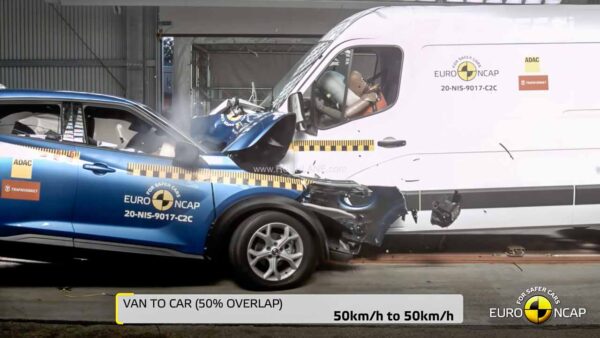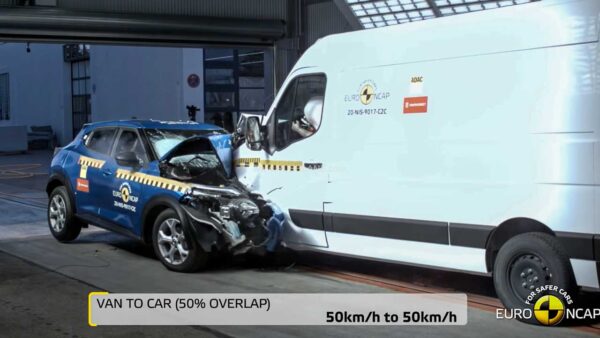
Even though the passenger car and van share the same badge they have vastly different safety credentials
Covid-19 has led to a surge in demand for various delivery services and as result, in recent times movement of commercial vans has risen a few notches. While automotive safety has been harped upon loudly over the past few years all over the world, it mainly has been restricted to passenger vehicles only.
Commercial vans that perform freight services for professional purposes as they offer cargo flexibility on roads have not been given that much importance as far as safety is concerned. In a crash test conducted by European NCAP, the safety regulatory body brought out the glaring lack of safety in commercial vans.
Offset Deformable Barrier Test
Recently, Euro NCAP conducted a safety test for Nissan NV400 commercial van, where two crash tests were conducted to determine its safety scores. Nissan shares its design with its alliance partner Renault for its Master van, hence there are lots of similarities between the two.
The Front-wheel-drive van weighs 2848 kg and in its first test, it crashed against a Mobile Progressive Deformable Barrier (MPDB) weighing 1400 kg. The half-loaded van shows heavy deformation at the point of impact which adversely affects the front passengers.
The van is equipped with one airbag, belt load limiter and pre-tensioner each. Both the barrier and van were at a speed of 50 kmph at the point of impact. While it scored 10.68 points out of 16 in driver’s protection, it fared poorer in front passenger safety with 9.14 points. The mobile barrier shows high localised deformation in the evaluation area. This was followed by a front-on collision test with a 5-star rated safety car.
Van To Car Test
The same-spec NV400 collided front on with a Nissan Juke which weighed around the same as the mobile barrier (1487 kg to be precise). The crossover comes equipped with standard safety fitments such as driver and front passenger airbags, frontal and curtain (side) airbags, belt load limiters and pre-tensioners.
On the basis of both tests, it was concluded that the van body most certainly is not designed to withstand much overload. It was also highlighted that both occupants in the commercial van showed a high risk of injury to the chest, knee, femur and pelvis.

Conclusion
Not only is it unsafe for occupants in the van but also for on boarders in other vehicles as well. While the compact SUV is better equipped in terms of safety, the crash certainly has its effects on its occupants. The dual-load path design of Juke’s front end has prevented a more catastrophic outcome even though the driver and passenger showed an increased risk of injuries to chest, knee, femur, pelvis as well as lower extremities.
With this test, Euro NCAP has brought out that such low safety standards for commercial vehicle segments are typical since consumers regularly put short-term profits ahead of safety principles. These tests also highlight the need for better compatibility between passenger cars and vans.

